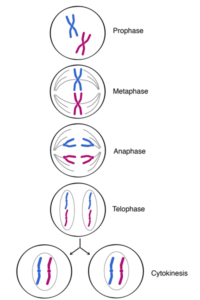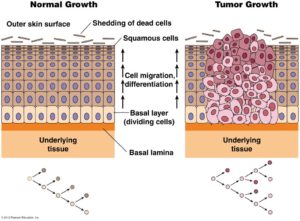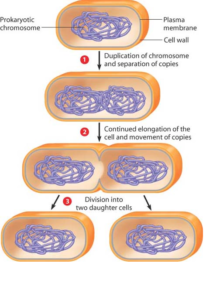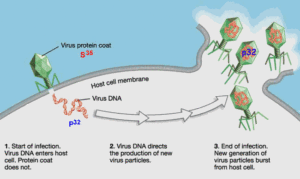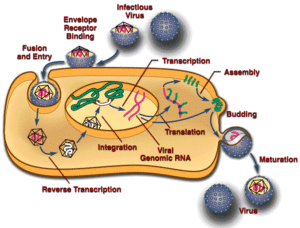Cells (AQA A2 Biology) PART 4 of 6 TOPICS
|
All cells arise from other cells:
In a cell that is not undergoing division, DNA is visible as an indistinct mass called chromatin and nuclear membrane as well as nucleolus are still intact. Centrioles lie closely to one another.
Mitosis should be known thoroughly to such detail:
- Interphase: There are two growth phases where the cell makes organelles as well as enzymes to get ready for mitosis. There is also an S-phase where the DNA replicates.
- Prophase: DNA undergoes spiralization where it gets shorter and fatter. Two identical chromatids are held together at the centromere. Nucleolus and nuclear membrane disintegrate and centrioles move to opposite poles of the cell and form a spindle. NB: It is important that you say poles and not ends as you will not get a mark.
- Metaphase: Chromosomes lies at the equator of the cell where the kinetochore of the centromere is attached to the spindle fibres. NB: It is important that you say equator of the cell and not the middle of the cell as you will not get a mark. Also you may not include kinetochore as it does need to be needed.
- Anaphase: Centromeres divide when spindle fibres contract pulling each sister chromatid to opposite poles of the cell. Nuclear membrane reforms and the spindle disintegrates. NB: It is important that you say sister chromatid and not just chromatid as you will not get a mark.
- Telophase (cytokinesis): The cell divides into two daughter cells. The end product being the two daughter cells have equal amount of DNA as each other as well as being compared to the parent cell.
Cell division can also be lethal as uncontrolled cell division can lead to cancers and tumours.
Binary fission involves a bacterial cell increasing in length and doubling its parts. It forms a cross septum and divides into two. The time involved to double a population is called the generation time. Two copies are separated by the growth of cell membrane.
Viruses also replicate. They inject DNA and RNA into the host cell leaving the protein coat or can enter by endocytosis. Retroviruses have an enzyme called reverse transcriptase which causes viral DNA to be made on a template of viral RNA/DNA depending on what the virus has injected. This is called reverse transcription. It acts as a gene and is passed onto daughter cells and when activated it causes the cell to burst (lysis) because of a large amount of viruses replicating quickly.
The Mitotic Index should be known:
- n/N x 100 where
- n = number of cells in mitosis
- N = number of cells observed

